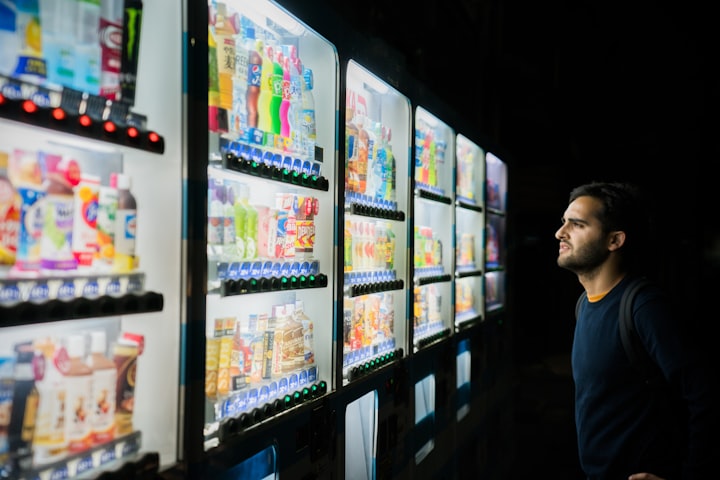
Introduction
Picture this: You're standing in the supermarket aisle, trying to decide between 27 varieties of pasta sauce. Your brain feels like it's doing the cha-cha-cha with too many choices. Welcome to the fascinating world of decision-making and the not-so-friendly neighbor that often comes along—cognitive overload. In this article, we'll unravel the science behind decision-making and the ways our brains deal with the overwhelming choices we face every day, all with a dash of humor to keep things lighthearted.
The Paradox of Choice: When More Is Less
We live in an era of abundant choices. From streaming services with thousands of movies to online shopping where you can buy a refrigerator or a rubber chicken costume with a few clicks, the options are endless. While this might sound like a dream come true, it often leads to what psychologists call "the paradox of choice."
Imagine you're at an all-you-can-eat buffet, and there are 100 dishes on the menu. Instead of filling your plate with culinary delights, you find yourself paralyzed by the sheer number of options. You end up with a salad and a breadstick, and you're left wondering, "Did I really come here for lettuce?"
The Overloaded Brain: Juggling Choices
Now, let's take a peek into the circus tent that is your brain when faced with a multitude of choices. Each decision activates neural circuits in your prefrontal cortex, like tiny acrobats juggling flaming torches. When the circus gets crowded with too many decisions, cognitive overload steps in, yelling, "Everyone out! We're at maximum capacity!"
Your brain has a limited bandwidth for making decisions. When it's overwhelmed, you might experience decision fatigue. This is when you end up buying "mystery sauce" because you can't bear to choose between 27 tomato-based options.
The 7±2 Rule: Your Brain's Short-Term Memory Bouncer
Here's where things get interesting. Psychologist George A. Miller introduced the idea that our short-term memory can only hold about seven (plus or minus two) pieces of information at a time. That's like trying to juggle seven flaming torches – impressive but not sustainable.
When you're bombarded with choices, your brain is busy trying to keep these options afloat in your short-term memory. Too many choices, and your brain says, "Sorry, no more room on the dance floor!" This is when you start making bizarre decisions, like choosing the off-brand cereal with a picture of a giraffe on the box.
The Goldilocks Zone: Finding the Right Amount of Choice
So, does this mean we should ditch variety and stick to a bland, choice-free life? Not quite. The key is finding the "Goldilocks zone" of choice – not too little, not too much, but just right. For instance, in a study conducted by Sheena Iyengar, shoppers presented with a limited selection of jams were more likely to make a purchase than those overwhelmed by a vast array.
Businesses are also recognizing the importance of curating choices. Instead of bombarding customers with an ocean of options, they're offering carefully selected menus or product recommendations. Less can indeed be more, even in the world of decision-making.
The Decision-Making Survival Kit
Now, let's equip ourselves with some strategies to navigate the treacherous waters of decision-making:
Prioritize: Focus on the most critical decisions first. Do you really need to choose between 50 shades of gray for your living room paint?
Limit Options: When possible, reduce the number of choices. You'll thank yourself when you're not standing in the toothpaste aisle for half an hour.
Set Constraints: Define your criteria and stick to them. If the pasta sauce doesn't meet your "no high-fructose corn syrup" rule, it's out!
Take Breaks: Decision fatigue is real. Take short breaks during intense decision-making sessions to recharge your mental batteries.
Trust Your Gut: Sometimes, your subconscious knows best. If you find yourself endlessly weighing pros and cons, trust your intuition.
Conclusion
In the end, understanding the science of decision-making and how cognitive overload can throw a wrench in our choices is like having a backstage pass to the circus of your own mind. By recognizing your brain's limitations and implementing strategies to manage decision fatigue, you can confidently navigate the sea of choices in our modern world. Just remember, the next time you're overwhelmed by options in the supermarket, it's okay to chuckle and opt for the tried-and-true pasta sauce with the dancing tomato on the label. After all, sometimes the classics are classics for a reason.
References:
Iyengar, S. S., & Lepper, M. R. (2000). When choice is demotivating: Can one desire too much of a good thing?. Journal of Personality and Social Psychology, 79(6), 995-1006.
Schwartz, B. (2004). The paradox of choice: Why more is less. HarperCollins.
Miller, G. A. (1956). The magical number seven, plus or minus two: Some limits on our capacity for processing information. Psychological Review, 63(2), 81-97.
Vohs, K. D., Baumeister, R. F., Schmeichel, B. J., Twenge, J. M., Nelson, N. M., & Tice, D. M. (2008). Making choices impairs subsequent self-control: A limited-resource account of decision making, self-regulation, and active initiative. Journal of Personality and Social Psychology, 94(5), 883-898.
About the Creator
Damien
A student interested in tech.





Comments
There are no comments for this story
Be the first to respond and start the conversation.